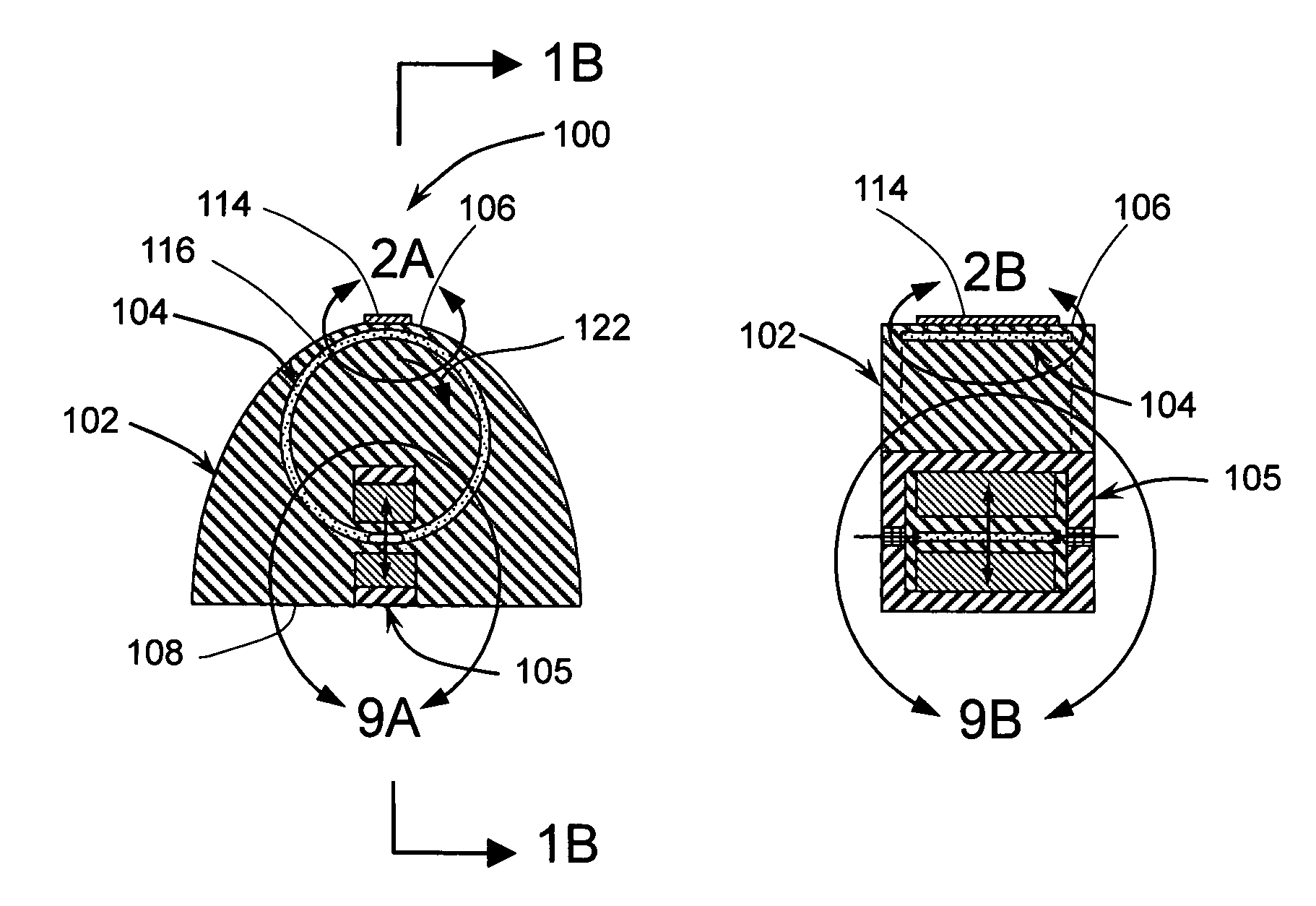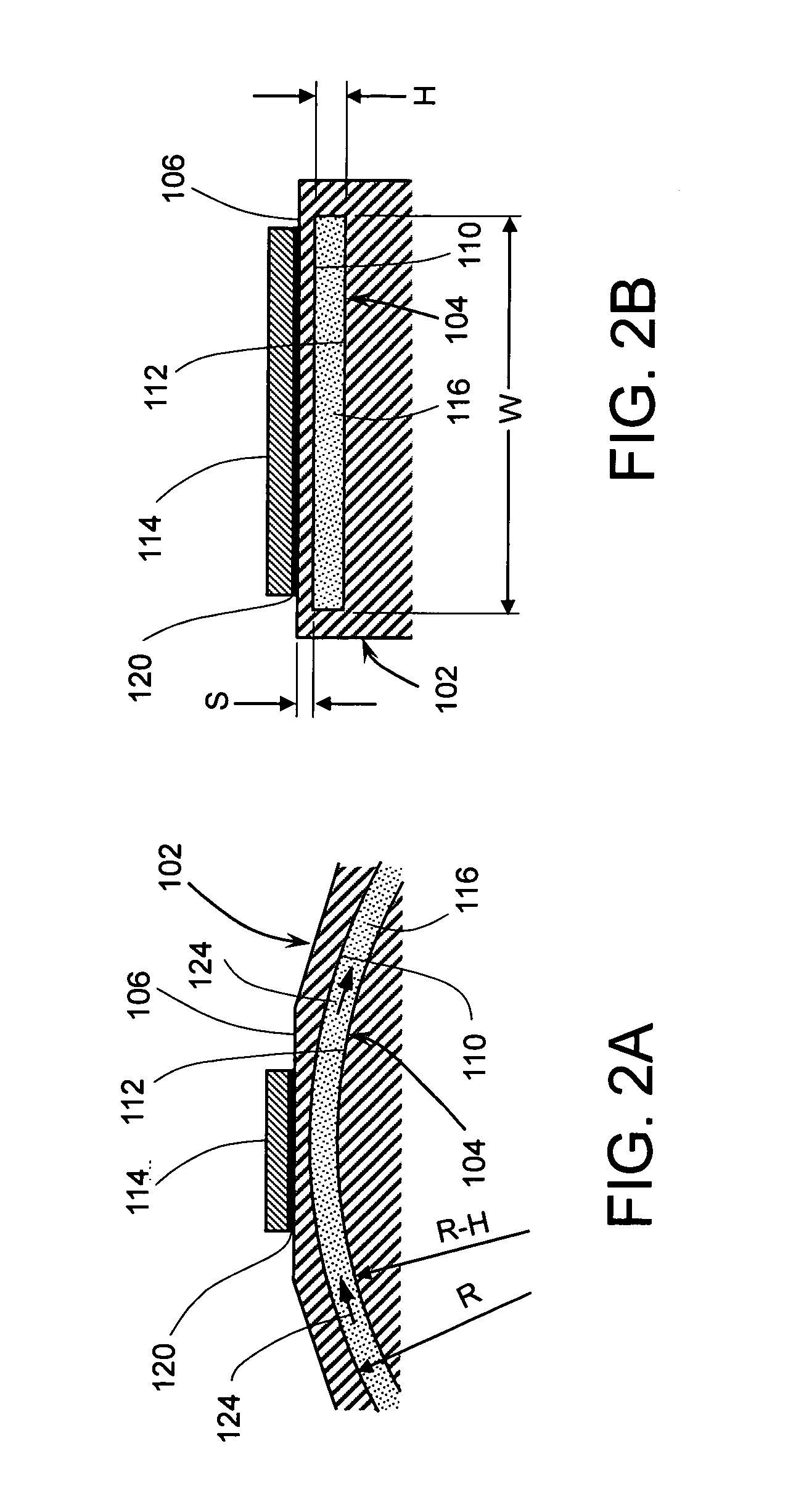Thermal interface device
a technology of heat-generating components and interface devices, which is applied in semiconductor devices, lighting and heating apparatus, and semiconductor devices. it can solve the problems of reducing the reliability of hgc devices, limiting factors, and difficult cooling requirements for new generation heat-generating components (hgc), so as to improve the rate of waste heat removal, reduce power consumption, and be suitable for large volume production
- Summary
- Abstract
- Description
- Claims
- Application Information
AI Technical Summary
Benefits of technology
Problems solved by technology
Method used
Image
Examples
Embodiment Construction
[0063]Selected embodiments of the present invention will now be explained with reference to drawings. In the drawings, identical components are provided with identical reference symbols in one or more of the figures. It will be apparent to those skilled in the art from this disclosure that the following descriptions of the embodiments of the present invention are merely exemplary in nature and are in no way intended to limit the invention, its application, or uses.
[0064]Referring now to FIGS. 1A and 1B, there is shown a heat transfer device (HTD) 100 in accordance with one preferred embodiment of the subject invention. HTD 100 may generally comprise a body 102 and a magneto-hydrodynamic (MHD) pump 105. The body 102 may further comprise a first surface 106 adapted for receiving heat from a heat generating component (HGC), a second surface 108 adapted for rejecting heat to a heat sink, and a flow channel 104. The body 102 may be preferably made of a material having high thermal conduc...
PUM
 Login to View More
Login to View More Abstract
Description
Claims
Application Information
 Login to View More
Login to View More - R&D
- Intellectual Property
- Life Sciences
- Materials
- Tech Scout
- Unparalleled Data Quality
- Higher Quality Content
- 60% Fewer Hallucinations
Browse by: Latest US Patents, China's latest patents, Technical Efficacy Thesaurus, Application Domain, Technology Topic, Popular Technical Reports.
© 2025 PatSnap. All rights reserved.Legal|Privacy policy|Modern Slavery Act Transparency Statement|Sitemap|About US| Contact US: help@patsnap.com



